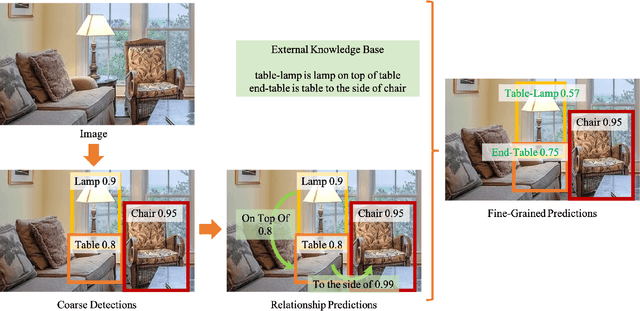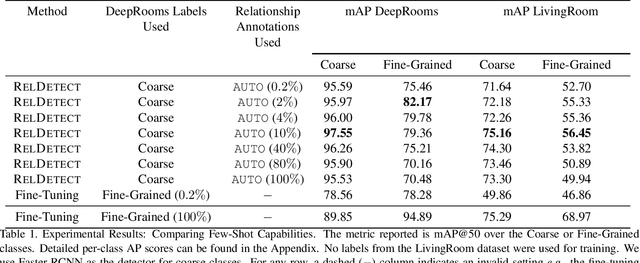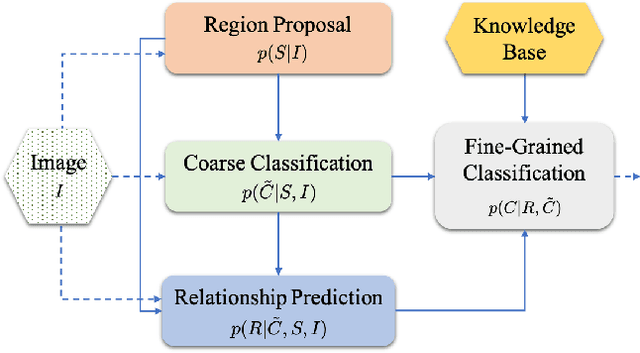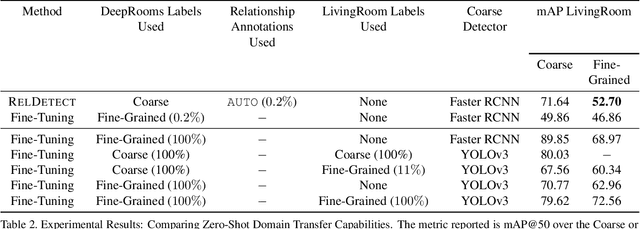Amit Kumar K C
Unsupervised and semi-supervised co-salient object detection via segmentation frequency statistics
Nov 11, 2023Abstract:In this paper, we address the detection of co-occurring salient objects (CoSOD) in an image group using frequency statistics in an unsupervised manner, which further enable us to develop a semi-supervised method. While previous works have mostly focused on fully supervised CoSOD, less attention has been allocated to detecting co-salient objects when limited segmentation annotations are available for training. Our simple yet effective unsupervised method US-CoSOD combines the object co-occurrence frequency statistics of unsupervised single-image semantic segmentations with salient foreground detections using self-supervised feature learning. For the first time, we show that a large unlabeled dataset e.g. ImageNet-1k can be effectively leveraged to significantly improve unsupervised CoSOD performance. Our unsupervised model is a great pre-training initialization for our semi-supervised model SS-CoSOD, especially when very limited labeled data is available for training. To avoid propagating erroneous signals from predictions on unlabeled data, we propose a confidence estimation module to guide our semi-supervised training. Extensive experiments on three CoSOD benchmark datasets show that both of our unsupervised and semi-supervised models outperform the corresponding state-of-the-art models by a significant margin (e.g., on the Cosal2015 dataset, our US-CoSOD model has an 8.8% F-measure gain over a SOTA unsupervised co-segmentation model and our SS-CoSOD model has an 11.81% F-measure gain over a SOTA semi-supervised CoSOD model).
On Utilizing Relationships for Transferable Few-Shot Fine-Grained Object Detection
Dec 01, 2022



Abstract:State-of-the-art object detectors are fast and accurate, but they require a large amount of well annotated training data to obtain good performance. However, obtaining a large amount of training annotations specific to a particular task, i.e., fine-grained annotations, is costly in practice. In contrast, obtaining common-sense relationships from text, e.g., "a table-lamp is a lamp that sits on top of a table", is much easier. Additionally, common-sense relationships like "on-top-of" are easy to annotate in a task-agnostic fashion. In this paper, we propose a probabilistic model that uses such relational knowledge to transform an off-the-shelf detector of coarse object categories (e.g., "table", "lamp") into a detector of fine-grained categories (e.g., "table-lamp"). We demonstrate that our method, RelDetect, achieves performance competitive to finetuning based state-of-the-art object detector baselines when an extremely low amount of fine-grained annotations is available ($0.2\%$ of entire dataset). We also demonstrate that RelDetect is able to utilize the inherent transferability of relationship information to obtain a better performance ($+5$ mAP points) than the above baselines on an unseen dataset (zero-shot transfer). In summary, we demonstrate the power of using relationships for object detection on datasets where fine-grained object categories can be linked to coarse-grained categories via suitable relationships.
 Add to Chrome
Add to Chrome Add to Firefox
Add to Firefox Add to Edge
Add to Edge